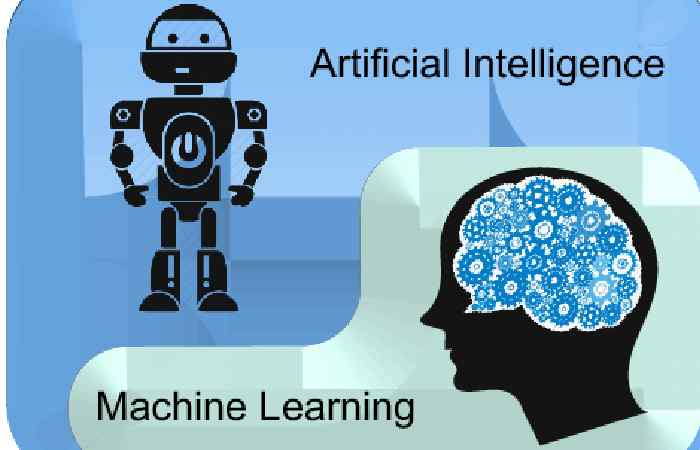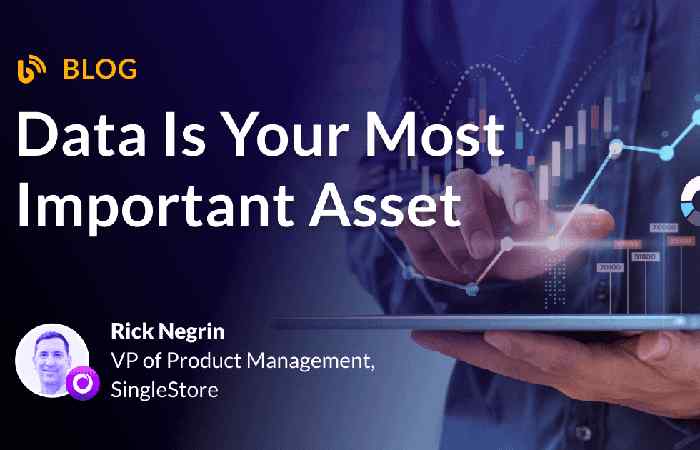Which Technologies Combine To Make Data A Critical Organizational Asset? – Data has become a vital organizational asset in today’s modern world. Organizations constantly seek ways to use data more effectively to improve their performance. Many factors determine data, including high competition and changing customer preferences. The most successful organizations will be able to identify areas where they can use their data more effectively and quickly implement new strategies to exploit this competitive advantage. However, many challenges are related to managing large amounts of data and obtaining meaningful insights. Data analysis is a skill that requires specialist training and technical expertise, as well as a good understanding of the organization’s goals and the processes that generate the data. Finding the right people with the right skills to manage your data is one of the most crucial challenges facing many organizations today.
As data becomes more widely used by organizations, selecting the right technologies to manage it becomes even more vital. Different technologies have different strengths and weaknesses, making choosing the right solution challenging. It is, therefore, essential to understand the available technologies and how they can remain used together to get the most out of your data.
Table of Contents
Which Technologies Combine To Make Data A Critical Organizational Asset?—-
Machine Learning and Artificial Intelligence (AI) are the technologies that make data a critical organizational asset.
Machine Learning and Artificial Intelligence

Data is becoming an increasingly precious asset for organizations worldwide. Companies in many industries use it to improve performance and boost their bottom lines. However, collecting and managing data is no longer enough; organizations must use it more effectively to drive innovation and achieve their full potential. The grouping of machine learning (ML) and artificial intelligence (AI) technologies remains applied in many business areas where data is critical. It is helping to revolutionize how organizations operate.
Brief Description of MI and AI
By combining AI with ML, companies can take full advantage of the vast amounts of data they hold and use it to automate complex tasks and analyses to improve efficiency, reduce costs, and make better-informed decisions. While these technologies can remain employed in a wide range of applications, they are both beneficial when applied to the problem of managing and analyzing large and complex data sets, and they can work together to enhance the effectiveness of an organization’s data analysis processes. Humans can’t do this accurately and effectively when interpreting intricate patterns within large amounts of data. The speed and accuracy of AI’s systems mean that they help sort through large quantities of data and identify trends, designs, and chances that would otherwise be invisible to the naked eye.
Machine learning can also identify the most effective action based on a particular set of circumstances and suggest the most appropriate action in a given situation. Using ML in this way can significantly enhance the efficiency of an organization’s decision-making process. It can be a valuable addition to other tools, such as predictive analytics, used to explore potential new growth areas for the company. Combining these two technologies is a compelling way for businesses to get the most out of their data. It can help them identify new growth opportunities, build a deeper understanding of their clients, and improve their interactions.
Utilizing AI for data analysis can improve the speed and quality of decision-making and help companies uncover valuable insights from various data sources. As a result, companies that implement an AI-driven approach to data analysis will be able to make more informed decisions at a faster rate, react more quickly to market developments, and take advantage of emerging opportunities as they arise.
Benefits of Using AI-powered Data Analytics
The main benefit of using AI-powered data analytics is its ability to simplify complex tasks by automating the process and identifying patterns that might otherwise go unnoticed or buried within the vast volumes of data businesses generate regularly. Another significant advantage of this approach is that it can dramatically reduce the time and resources required to analyze the data and generate meaningful insights. It also enables companies to analyze data from multiple sources simultaneously rather than focusing on one basis at a time. Overall, implementing an AI-driven approach to data analysis can assist businesses in improving their operational effectiveness and give them the edge they need to stay competitive in today’s increasingly fast-paced business environment.
AI-powered data analytics can significantly improve the speed and quality of decision-making within organizations. It can dramatically enhance their ability to extract precious insights from the enormous amounts of data they collect daily. Using AI to identify designs in the data automatically can lead to significantly faster insights and reduce the time and effort required to manually mine and analyze the data. Reducing the resources needed to make data-driven decisions can increase an organization’s efficiency and help it gain a competitive advantage in its industry.
What are the advantages of Combined Technologies: ML and AI?
AI or ML platform is an application that uses Machine Learning and Artificial Intelligence technologies. There are two main benefits of combining these technologies into a single platform.
- First, when integrated into a single system, they work together to provide a more holistic solution that can be far more effective than each technology.
- Second, by integrating the two technologies into the same platform, companies can significantly reduce the time and costs involved in implementing the solution compared to a more traditional approach that requires separate systems for each technology.
Therefore, combining Machine Learning and Artificial Intelligence into a single platform provides businesses with many vital benefits, including increased efficiency and better insight into their data that can remain used to drive significant improvements in performance across all business areas.
Why is Data an Important Organizational Asset?

Enabling data-driven decisions is a crucial priority for many organizations as it allows them to leverage the vast amounts of data available to understand their customer’s needs better and improve how they work. To achieve this, they need access to a robust analytics platform to help them make sense of this data and gain valuable insight into the patterns within their business. It is also important to note that while data remains often viewed as simply a byproduct of the organization’s day-to-day operations, it is a critical organizational asset that needs to be appropriately managed and protected by IT administrators. It is essential in industries where regulations such as GDPR restrict the data that can be stored and shared within an organization.
While protecting sensitive information from external threats is essential, ensuring it is appropriately secured within the organization is also crucial. In recent years, there has been a growing emphasis on securing data against the various internal threats posed by employees besides other insiders who may attempt to compromise the organization’s security by stealing confidential data or using it for their purposes. It can pose a significant risk to organizations as data breaches are often difficult to detect and can incur severe financial and reputational consequences if left unchecked. For this reason, all businesses must invest in the appropriate data protection tools to protect their data and ensure it remains secure at all times.
For example, most organizations use cloud storage services to store critical files that they can access from anywhere with an internet connection without having to set up a dedicated in-house server room. However, these services must be sufficiently protected from the threat of external hackers to prevent unauthorized parties from accessing confidential information stored on them.
Conclusion
Which Technologies Combine To Make Data A Critical Organizational Asset? – The above blog determines the importance and use of combined technologies in artificial intelligence – analytics and machine learning- enabling organizations to capture opportunities and tackle challenges to achieve faster and more accurate results to achieve real business benefits. The ever-increasing volume of data and complexity of information have necessitated better tools that can accurately analyze and interpret large volumes of data to derive actionable insights, which can be used to drive business decisions and maximize the value of business processes.
To become a skilled professional in using Artificial Intelligence – Analytics, and Machine Learning technologies, it is necessary to have a sound knowledge of these technologies and know how they are applied in the real-world environment. Training certification in Pickl.AI will equip you with the required skills to use the combined technology to automate the operations in your organization and help save costs and time. To learn more about Pickl.AI and its Data Science course for Professionals, visit the official website and apply for a data science course line.

